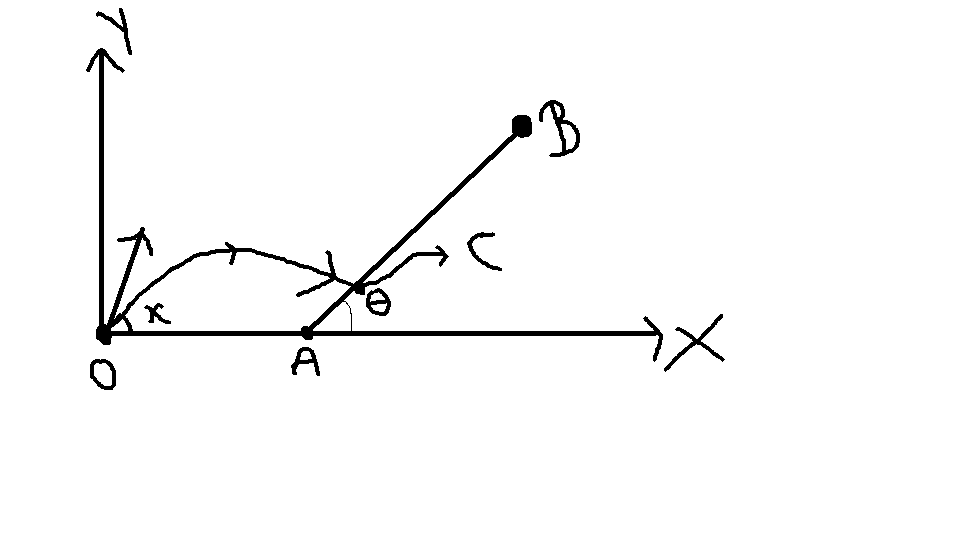Recollect the past 7!
A Particle is projected from on the ground with velocity at an angle with the horizontal. It strikes at a point on a fixed smooth plane having inclination theta with the horizontal as shown in the figure below. If the particle does not rebound from the plane, then find maximum height from the ground to which the particle rises.
Details And Assumptions :
The particle does not get stuck to the plane at point of striking(Point C in the figure) that is it can move further on the plane. The collision is perfectly inelastic and particle can move along the plane
All the given Below details are in SI Units
, , , .
OA = 10/3 m

For the problem writing party.
The answer is 4.45.
This section requires Javascript.
You are seeing this because something didn't load right. We suggest you, (a) try
refreshing the page, (b) enabling javascript if it is disabled on your browser and,
finally, (c)
loading the
non-javascript version of this page
. We're sorry about the hassle.
Quite tricky , but easy
First solve initial steps, you would get to know that the ball strikes the incline when it is at its highest point of its journey .
After striking we have to equate the component of velocity in the direction normal to incline to zero (as mentioned in question)...consider the component of velocity along the incline ....then find the max height attained from this position and add it to the height of point of strike, this will give you the highest point attained.
Which comes out to be 1 . 2 5 + 3 . 2 = 4 . 4 5